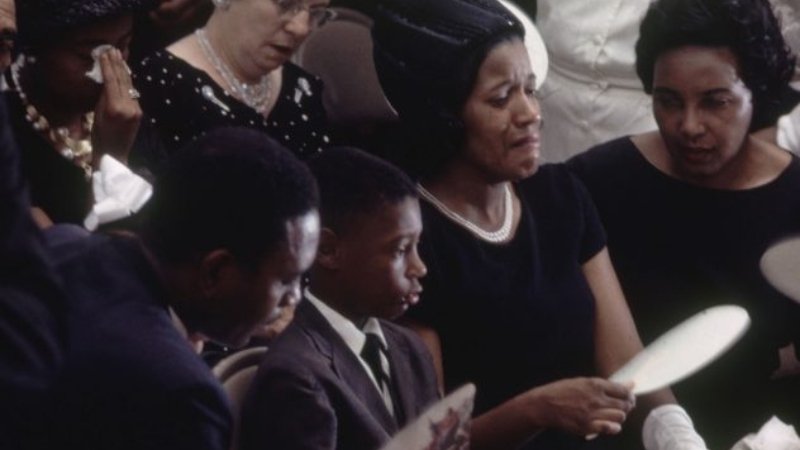In 1994, a jury found Byron De La Beckwith guilty of first-degree murder. He was a 74-year-old white supremacist and a long-time Klan member. His crime was the 1963 killing of Medgar Evers. Evers was a civil rights activist and a U.S. Army veteran. De La Beckwith shot him in the back with a rifle. The attack happened in the driveway of Evers’ home in Jackson, Mississippi. He was only 37 years old and a father.
Decades earlier, De La Beckwith faced two trials. Both ended with hung juries, and he walked free. But justice finally came in 1994. For more than 30 years, Evers’ widow, Mylie, fought for justice. When the verdict came, she felt a heavy weight lift. She could begin to let go of the anger and hate she had carried for so long.
A Shocking Crime
Even today, the story of Medgar Evers’ death is disturbing. At that time, America had not yet faced the wave of domestic terrorism that would later define the era. The murders of JFK, Malcolm X, Bobby Kennedy, and Martin Luther King Jr. had not yet happened.
Why It Stood Out
Because of this, the killing of Evers was even more shocking. He was a man of great courage and importance. His murder in broad daylight was a crime that horrified people of conscience everywhere.
LIFE Magazine’s Response
On June 28, 1963, LIFE magazine covered the assassination. The tone was sharp and emotional. The writers showed scorn for the Klan and for white supremacists. They expressed anger at the loss of such a valuable life. At times, their words carried a biting, almost sarcastic edge.
The Wider Responsibility for Evers’ Death
At first, Medgar Evers’ killer was not known. But the blame for his death reached far beyond one man. A report by the Mississippi Advisory Committee to the U.S. Commission on Civil Rights told the story. The committee had nine members—six white and three Black. They were shocked by what they found. The report said most Mississippians did not see the scale of illegal violence. It showed that in nearly every part of life, Black citizens received far less than their rights as Americans.
It also explained that Black people lived with constant indifference from white people. This was not only a social system. It was backed by state and local governments, both legally and illegally. The committee also uncovered many cases of police brutality. The number was described as “alarming.” Instead of helping, state officials tried to block the investigations.
The Aftermath of Evers’ Death
The events after Medgar Evers’ murder looked like a dark add-on to the civil rights report. Police in Jackson arrested about 350 Black demonstrators. Many were ministers walking in pairs. Even children carrying small American flags were taken in.
The police used rifles, dogs, and clubs to break up the crowd. The mob had formed during Evers’ funeral procession. People were singing as they marched.
Mayor Allen Thompson called Jackson “the closest place to heaven there is.” Like the governor and most of the city’s leaders, he was part of the white Citizens Council. He claimed life would always stay the same. Their only fear, he said, was “outside agitators.”
A Voice of Conscience
After the funeral, diplomat and Nobel Peace Prize winner Ralph Bunche shared his thoughts. He said that if white citizens of Jackson had any conscience, they would have attended Medgar Evers’ funeral. Their presence could have shown shame for the crime committed in their city. But they did not come. Bunche concluded that white Jackson seemed to have “the morality of the jungle.” This view was harsh. There were white moderates in Jackson. Yet the question remained: when would they speak up and make their voices heard?
A Tribute and a Legacy
In the same issue, LIFE magazine published a tribute by Myrle Evers, Medgar’s widow. She wrote about the daily threats their family faced. “Threats came daily, cruel and cold and constant,” she said. But she added that they did not let hate destroy them. Medgar Evers was laid to rest at Arlington National Cemetery. In 1970, the City University of New York honored him by creating Medgar Evers College. His widow, Myrle Evers-Williams, later remarried in 1976. Their daughter, Reena, and youngest son, James, are still alive. Their oldest son, Darrell, died of cancer in 2001 at the age of 47.
For any suggestion, or changes, please contact us, the Kaz Legacy team


